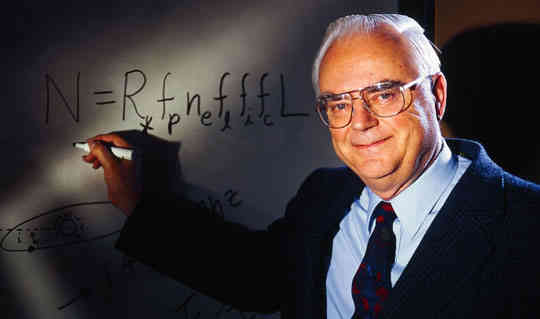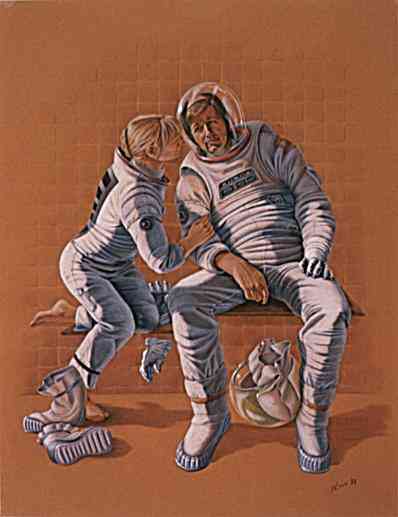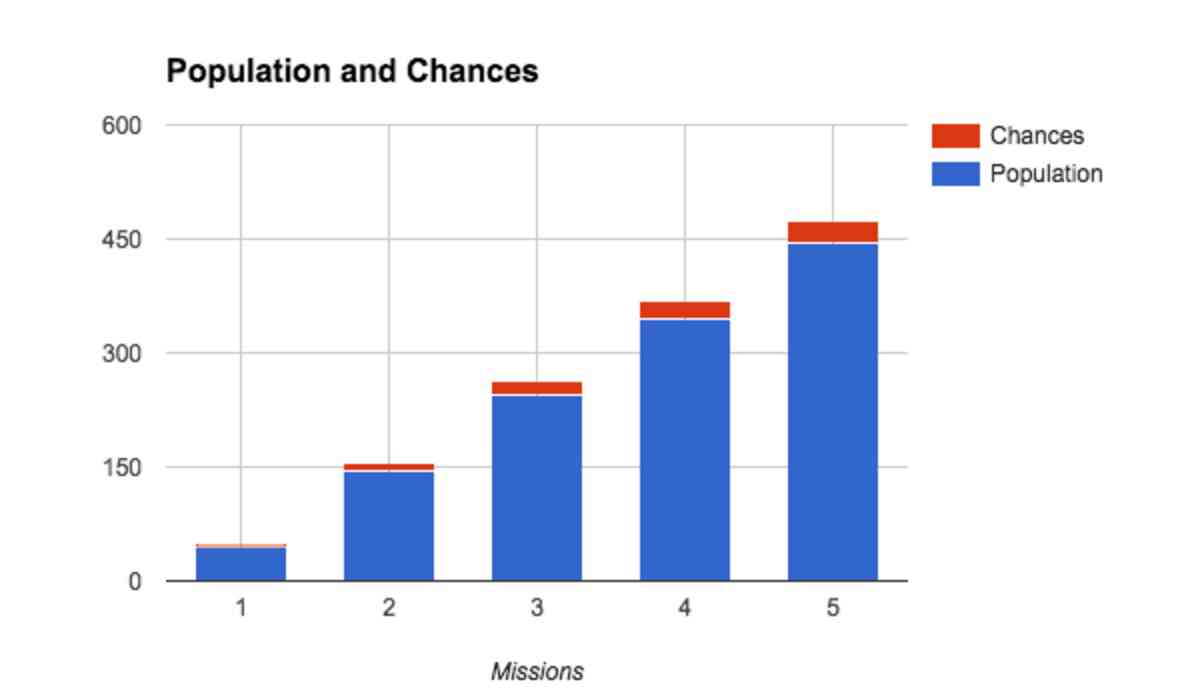Your Significant Other Martian
Part I of The Martian Sex Journal

The Martian Sex Journal
There comes a point in our whole worldview on Mars in which we have to prepare ourselves for the prospect of having Martian children living on a colony for the first time. Children born on Mars will be one of the biggest highlights of the history of the human race. They prove something very important to us, which is that those children can grow in different environments and survive and live a life in a place other than Earth. Just studying the development of future post-colonial Martian generations unlocks a lot of secrets of how the human race can adapt to secondary data points other than Earth. Furthermore, it helps us understand how we are affecting the Earth and seeing what other effects we can do to improve it instead.
The Journal is divided into five parts, each discussing a specific topic in the colonization of Mars through reproduction.
Part I:
Your Significant Other Martian
Part II:
The Case for Space Sex
Part III:
The First Martian-Born Generation
Part IV:
Of Martians and Terrans
Part V:
Dreams of Marsfornication
Let’s consider this scenario for a second.
You’re in your 30s, you live in the year 2029, you just sold all your assets so that you can afford that one way ticket to the Martian colony. What if you’re single by then? Do you think you’d be able to find a partner on Mars to live with? You’d hope so, because a future Martian colony would need to have a good amount of people to be enough for them to live there longer.
At the very least, an early Martian colony that bears fruition out of a NASA/SpaceX collaboration would try to keep the gender ratio of colonists being sent there at an approximately equal split. After all, finding true love is hard as it is right now, so no colonists want the extra problem of having a large ratio of one gender over another.
Let's take us as an example. If we take a look at the modern world right now and if you are a young professional between your twenties and thirties living in a big city, finding true love and a significant other might prove to be difficult for you.
We live in a time and place where the pressure of finding a significant other is not measured enough to know what the rules are for dating, because of technological evolution having a continued impact and modification on society. With our smartphones today, we currently have a large array of apps we can use for connecting with someone. What I am attempting to do in this post is to measure how likely it is to find love for me in the modern world, and using that as a benchmark in which I can measure finding love on Mars.
In collaboration with sociologist Eric Klinenberg of NYU, stand-up comedian Aziz Ansari compiled a lot of research data and insights towards dating in the digital world in his book Modern Romance (it's a very good read, I highly recommend you check it out).

What I find interesting is the comparison drawn by older generation marriages to modern times and how technology plays a huge role in this.
Aziz shows in the book a 1933 study that shows how older generations had a higher chance of marrying someone that lived close to them, such as in their building, compared to modern times, where people tend to marry someone who lived far away (or just not close to them growing up).
With those trends of people marrying away from their place growing up, people are also marrying much older, with New York being the highest state in the country with people marrying later on, at 28 and 30 for women and men, respectively.
The main reason for this trend, other than the fact that technology has made us able to not just be in touch with families and friends from every period of our live from the palm of our hand, but also having access to a large world of singles apps and online dating where we have so many options. This makes us want to go find the person we feel most in love with, compared to generations ago where people tended to marry someone who was just good enough. In the city of the hustle and bustle and where every New York minute is a currency spent on the pursuance of valuable moments, how would one fare in it and how would one then fare on Mars?
Those two opposites provided for an excellent benchmark to measure the success of yours truly.
In order to measure my chances of first finding love in the city, I will be using an interesting formula that space fans adore: the Drake Equation. I’ll use that formula again then to measure my chances on Mars.
The Drake Equation
TLDR
Imagine multiplying a really, really small probability (in the teeny tiny percentage) by the infinite vastness of the universe (ish), that’s what you get in terms of the possibility of other advanced intelligent beings existing in our galaxy or elsewhere in the universe.
For those of you who don't know the Drake Equation and why it's connected to finding romance, it's not exactly what you think it is. Canadian music artist Drake isn't going to come over to you and explain to you how to find love. Although, that ain't a bad way of finding love, using Drake's help as a wingman.

The Drake Equation is actually invented by Dr. Frank Drake as he initialized a conversation on finding extraterrestial life and increase dialog on space conversation at SETI (The Search for ExtraTerrestial life Institute).

So what is Drake’s Equation used for? It starts as a way of answering life’s toughest question, “Are We Alone in the Universe?” which has been haunting humanity for so long. Seriously, everything else we do in our life is a distraction from thinking about what the hell is going on in outer space.
Anyways, here's how the equation works in answering the question:
N = F* • fa • ne • fl • fi • fc • L
It’s not as complicated as it looks, it’s basically multiplying a really large set by a smaller product of probabilities. I’ve broken it down if you wanted to know what it’s composed of.
- F* The average rate of a star formation in a galaxy, so how often would something like Sol form in the Milky Way.
- fa The fraction of those stars that would have planet, so how would a star like our local Sun have planets like Mars.
- ne The fraction of those planets that are suitable to harbor life, like Earth.
- fl The fraction of those planets that actually develop life, like going from proteins to cellular organisms to animals.
- fi The fraction of those organisms that evolve to become an intelligent, civilized species like us.
- fc The fraction of those civilizations that actually develop technologies that would release detectable signals in space, like what we are doing with Voyager I.
- L The time that we spend doing this.
Multiply all of those and you get the possibility of finding other advanced intelligent beings. This may number in the hundreds or thousands, still an interesting range to work with when dealing with aliens.
Now that we established what it’s originally used for, let’s go ahead and perform some modifications to it in order to measure finding love.
The Drake Equation for Love in NYC
If we take Drake’s Equation and apply it to finding love, we can use a model based on this formula made by the Interdimensional House of Pancakes (I know, right?) which has a pretty interesting site.

The Equation is shown here as:
DNTotal = NP • fS • fA • fT • PD • PR • TY
It’s the same idea as the previous equation but with modified variables to multiply with.
- NP is the number of men/women you meet typically in a year.
- fS is fraction of men/women whose sexual orientation involves dating a member of your sex.
- fA is fraction of men/women who are available.
- fT is fraction of men/women who are your type
- PD is chance that given that someone meets the above criteria, you end up dating them once.
- PR is chance that given you date that person once, you will become involved in a relationship with them.
- TY is the time in years that it would take to find love.
DNTotal then becomes the total number of loving relationships you can have over a range of years that you define.
Now before we get started, this is another reminder that before we can estimate finding love on Mars, we will first figure out the chances of I finding love for myself in New York City. Based on that result as a reference point, we can then see how it’ll look for me on Mars. Furthermore, I’m only going to take a look at finding love over a span of 1 year.
So, TY = 1 year.
In NYC, in terms of number of people I'd meet in a single year, I’m going to illustrate what that would mean. It could be acquaintances, people I interact with, meet through online dating, talk to at parties, at the bar, or through friends. This could also be people I sit next to in the subway, or baristas serving too-hip coffee that I order from. My definition of “meeting” someone can, as illustrated, mean just having a few lines of conversations to some sort of a relationship.
Now, let's say I meet one new person a day for a year. That’ll give me 365 new people I meet in a year.
However, let’s be a bit more realistic. I can halve that number to get 182.5 or 183 people I can potentially meet per year, to cover days where I’m not feeling too social. This is all an assumption of course, but I'm laying it down to just do comparisons later on.
So, then, the total number men/women you meet typically in a year is NP = 183.
Now, for this spread, I’m gonna have to make a few more assumptions to get fS. I’d like to divide the set I meet in one year into 4 categories:
- Women attracted to men
- Women attracted to women
- Men attracted to women
- Men attracted to men
Out of those four categories, I’m gonna make another assumption that I meet more heterosexuals than homosexuals in a given year, so I’d assign a 40% spread per each heterosexual category, and a 10% spread per homosexual category, coming up to:
- 40% Women attracted to Men
- 40% Men attracted to Women
- 10% Women attracted to Women
- 10% Men attracted to Men
Since the fraction I’m looking for is women attracted to men, I have 40%. Now, let’s be safe and factor in a 5% margin of error, coming up to 35% or 0.35.
Therefore, our estimate for fS = 0.35.
For fA, the fraction of those who are available, we can assume a few things. NYC population is 53% female and 47% male according to NYC Census, with a population of 8.4 million people in total. Using Census data, we analyzed only the population who are never married singles between the ages of 20 and 34. In this subgroup, men outnumber women — 742,400 to 729,500.
So, women, at 729.5K as a ratio of 53% of total NYC population (4452000 total women population in NYC) is 16.38% of female population of NYC. Let’s assume half of that fraction is not interested in dating anyone and is strongly focused on career. That leaves 8% of women in that set available for dating, or 0.08 for fA.
So, fA = 0.08.
Now, for personality type, I'd use the Enneagram Personality type tests, which indicates 9 different general personalities that people can fall in to, so we can assume fT = 1/9 assuming an even spread of all the different personality types in a set. For simplicity’s sake, we will assume I’m only attracted to one type of personality (which, based on my dating history, is not the case).
So, we have fT = 1/9.
PD for having all the right qualities that I’m looking for, what is the possibility that we go on a first date. I’d like to say it’s 0.5 probability if we both find each other attractive, and going on a date is simply the act of meeting someone and going for drinks or dinner and getting to know them, without even committing to continuously dating them.
So, we have optimistically a 0.5 for PD.
For the probability of going into a relationship after dating the first time, I can take into account how many 1st dates I've been on in a year via online or meetup or see them somewhere. I will assume 1 date a month, since let’s face it, I do live in New York, and no one has time for dating. Plus, there’s way too many options to commit to anything, I find, so people are less likely to go out on a date more. Therefore, 12 first dates a year for simplicity’s sake. That’s 1/12 Possibility that I’ll take a girl out on a date after she fits previous criteria. To further simplify it, I’ll use that same fraction to assume the same of the girls I go out on a date within one year, 1/12 of them will be in some sort of relationship with me after the first date and the rest simply won’t work out.
So, for here, PR is 1/12.
DNTotal, the result of the Drake Equation when I account for all those numbers, will give me 1 in 421.6 or just about 422 possibility of finding love in one year in New York. To put that into perspective, I've generated a little emoji chart (I promise I'll try to improve my graphic design skills).

Now that’s just sad (sigh). Luckily, even though it’s all an assumption, the number sounds much better than what others have measured elsewhere.
One professor used Drake’s Equation to measure how likely is it to find their soulmate in London, which measured 1 in 285000 people. However, as mentioned, that is for finding a soulmate, which I don’t believe in since it’s just mathematically impossible that there’s only one person for every single person.
The Drake Equation for Love on Mars
Now, let’s look at being part of a Martian outpost formed by NASA.

Let’s imagine a NASA Mars mission being approved to send people for prolonged colonization of Mars. We can add you as one of the people who signed up and went through hell to be able to make it as one of the final astronauts approved by NASA to go colonize Mars. What are your prospects of finding love on Mars in that scenario?
What if 1 mission = 8 astronauts with equally split female-to-male ratio and if we have 4 missions over a decade with a 20% increment coming up to 45 people one is likely to meet on Mars.
So, NP = 45 people (yikes).
Let’s say you’re one of the final missions, so a large group of potential partners to meet. For here, we will consider fS of 50% since it’s equal gender split (the very least we can hope for).
Therefore, fS = 0.5.
For a colonist's availability to dating, it's definitely at 100% since we are assuming everyone is also consider settling down since it’s a major function of the colony.
So fA = 0.95 if we factor a 5% margin of error for availability.
For deciding if that person is your type, we will assume a general 3 out of the 9 for personality types. This is because you’re more open to different personalities since it’s a smaller colony.
So, fT = 3/9
What’s interesting now is, if all things match before and are ok, the possibility of you dating that person is 100% and them being interested since it’s a smaller pool. Let’s add a 5% margin error and a 10% for unpredictable scenarios, leaving us with 85% chance of possibility to date that person.
That’s our probability of dating that person, leaving us with a PD of 0.85
For the probability of actually being in a relationship with that person, I’d leave it at 50% for now, assuming it might either work out or not but only if the interest is divided with someone else.
So, PR = 0.5
What’s interesting in this scenario is that your chances of finding love on Mars are looking more better, standing at about 1 in 15 people from a pool of 3.33 options out of 45 people.

Now, let's we increase the number of NP and illustrate how often the colony would procreate by finding its match, assuming unchanged variables or assumptions but an increase in population, and furthermore not taking into account baby births (yet).
For the sake of reality, let’s look at the SpaceX model instead and see how going from 45 people on that NASA colony base and shifting to a large colony filled with multiple personnel, by adding an extra 100 people per Interplanetary Transport System journey every 26 months, we can see how someone’s chances changes on Mars.
Of course, finding love on Mars shouldn’t be someone’s reasons for going there, but it’s interesting to see that there’s at least a larger prospect for procreation there, at the very least, for science and humanity’s future.
The period of time we will be looking into is over 4 missions after the 10 year NASA mission of 45, which will give us a colony of 445 people (45 + 100 people * 4 missions).

Now naturally, we can see here, your chances stay the same, but you have a larger pool of options as the missions continuously add more to the population every 26 months. This will definitely change to become a lower probability as more and more people get added to the colonies over the next decades, but since it’s so spread apart and colonists get older and new children are born on Mars, it’s very interesting to see this potentially affect the chances of finding love on the planet far in the future.
This has been more of a thought experiment to see how human dynamics come into play as we push forward to colonize a new planet. What’s really interesting about current space exploration research is that topic of sex and reproduction in space is very awkward, and while still a curiosity, hasn’t been sanctioned from a scientific research angle by NASA or any other government. The next post in The Martian Sex Journal will explore that specifically, having sex in a low/zero gravity environment and how that affects human relationships as the colonists move away from our beloved gravity well on Earth towards long microgravity expeditions and finally to Mars.
From what we can see in this post, however, the good news for Martian Romeos and Juliets is that going to Mars in the long term means finally deleting your Tinder and Bumble apps. The wifi over there would suck anyways, right?
-
Why We Need To Save The Expanse
The Expanse follows the crew of the Rocinante and Captain James Holden as they navigate our local solar system. In this palantir into what our future holds, Mars has become an independent military power just like its namesake while the Asteroid Belt has become colonized by miners.
-
A Blockchain For Mars
If say, Martian miners on Valles Marineris want to mine bitcoin, which has the majority of miners on Earth, the delay in communication due to the speed of light will eventually result in a chain split.
-
Dreams of Marsfornication
Part V of The Martian Sex Journal
From the perspective of the dreamers of Mars, if we can’t even colonize the Red Planet, then this whole experiment is jeopardized. If humans can’t inhabit the cosmos, then we are literally stuck to Earth and its problems and warfare.
-
Of Martians and Terrans
Part IV of The Martian Sex Journal
This is where the irony of living on Mars with the dreams of terraforming it lies in the eyes of this tourist Martian visiting and experiencing Earth for the first time. The Martian’s forefathers left this very planet to settle and colonize Mars and terraform it be like Earth, even though they left Earth because they didn’t want to live there to begin with.
Don't Miss Out on those Occupied Mars articles!
comments powered by Disqus





